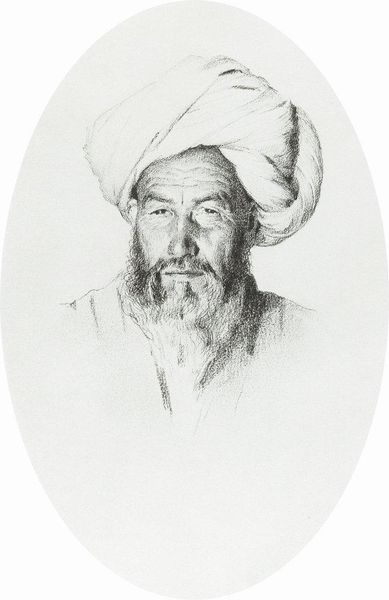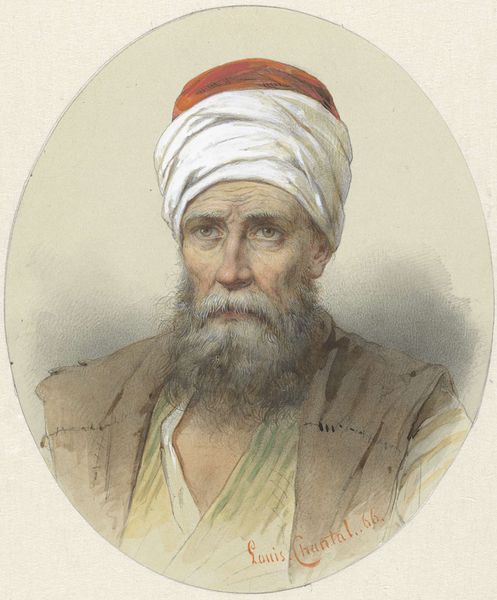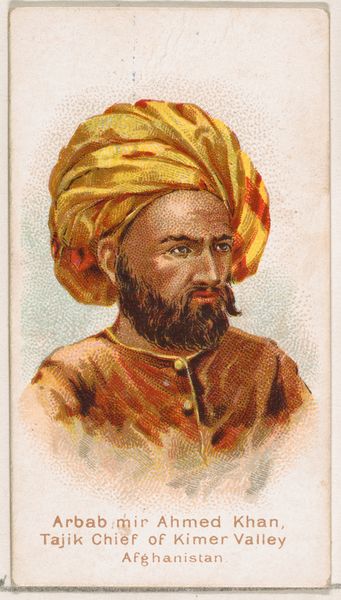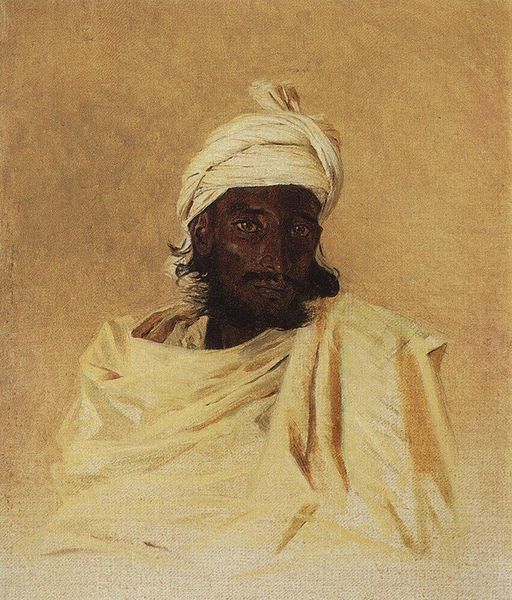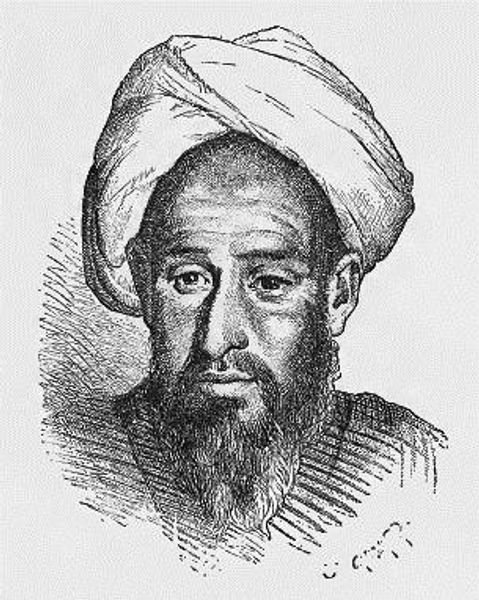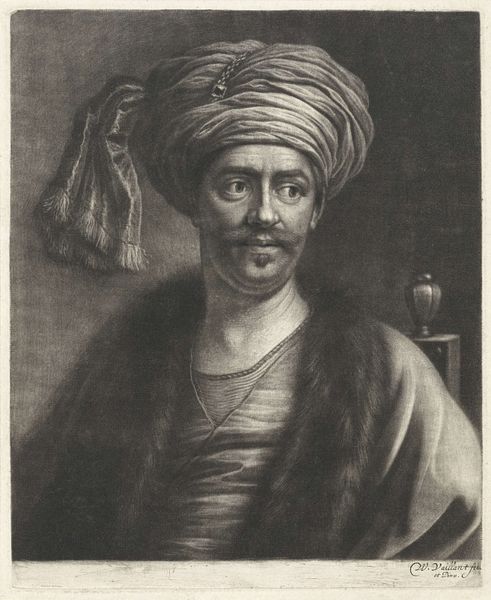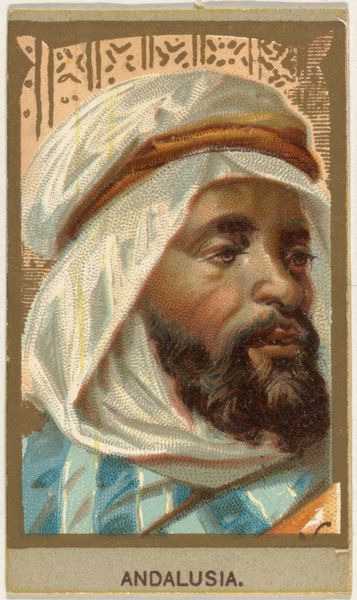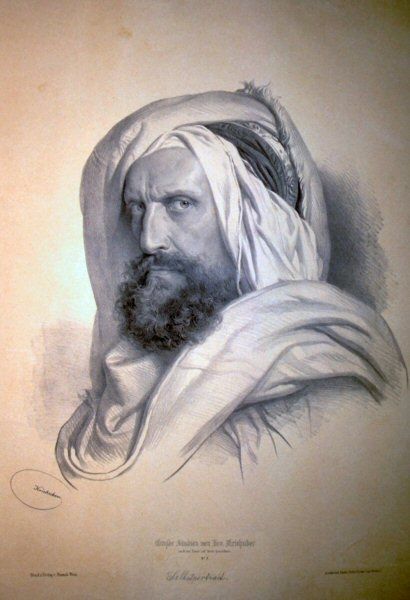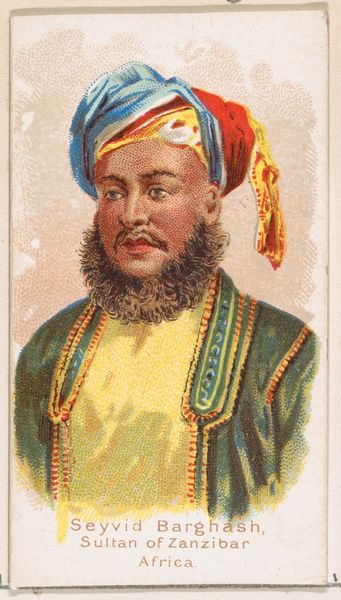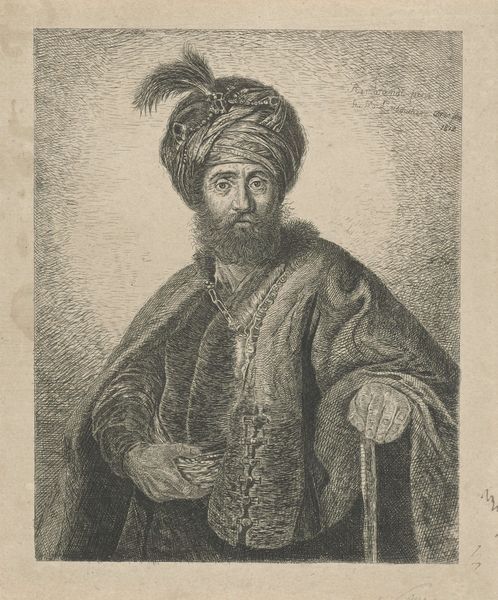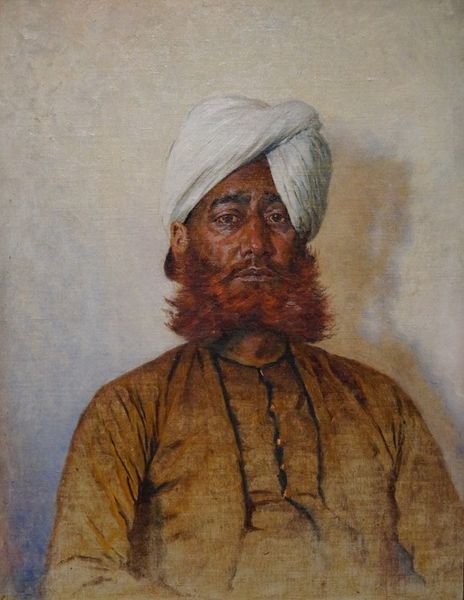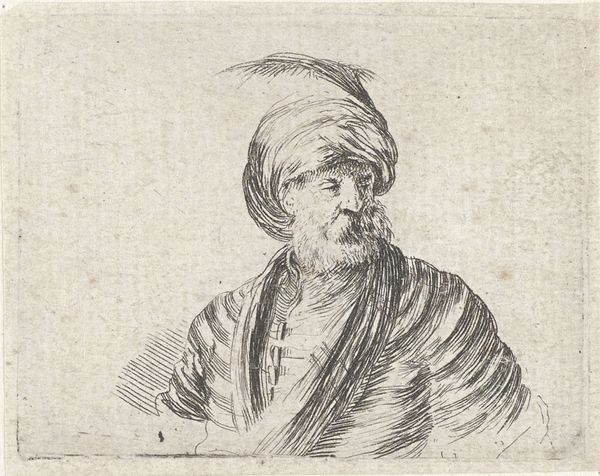
oil-paint
#
portrait
#
oil-paint
#
oil painting
#
orientalism
#
realism
Copyright: Public domain
Curator: Vasily Vereshchagin's 1883 oil painting, "Moslem Servant," part of the collection here at the Tretyakov Gallery in Moscow, is a striking example of the artist's forays into Orientalism and realism. What are your first impressions? Editor: Immediately, I'm drawn to the texture. The visible brushstrokes give the figure a tactile quality, especially the ochre robe. The oval composition keeps our gaze fixed on his visage and upper torso, reinforcing the portrait's purpose. Curator: Indeed. Vereshchagin, known for his military scenes and travel paintings, often explored cultural dynamics in his works. The term "servant" itself holds historical weight; consider its implications regarding labor, class, and colonial power relations. The depiction raises questions about representation. Who is this man, really? Is this meant as an ethnographic study or simply an exercise of the orientalist gaze that defined European artistic interests at the time? Editor: Semiotically speaking, his averted gaze is fascinating. It could suggest humility, submissiveness, or even a quiet defiance. Structurally, it creates a sense of unease; a distance that makes us question what he truly feels, placing emphasis on what remains unsaid. The use of light and shadow emphasizes the texture of his beard and robe; it does suggest a meticulous observation of reality that moves past stereotype. Curator: But is it just observation, or is it shaping a narrative? His dark complexion set against the light background and the carefully rendered fabrics might romanticize the "exotic" other for a European audience. We have to interrogate the artist's intentions, considering the politics inherent in representation during that period of intense colonial expansion. Does this portrait celebrate diversity, or does it reinforce power structures? Editor: It's true that context is unavoidable here. From a strictly formal perspective, however, there is power in the artist's control of tonal value. The portrait holds its tension in the harmony and careful blending of shadow with highlight. But beyond the aesthetics, this intersection with critical theory illuminates a necessary tension, highlighting what a figure truly represents within social power relations. Curator: A painting like "Moslem Servant" demands that we consider the interplay of aesthetics and historical consciousness; it challenges us to reflect on the legacies of colonialism, race, and representation. Editor: Right. It’s an exercise in seeing—seeing color, light, form and then acknowledging the complicated web of cultural forces that shape how, and what, we see.
Comments
No comments
Be the first to comment and join the conversation on the ultimate creative platform.
